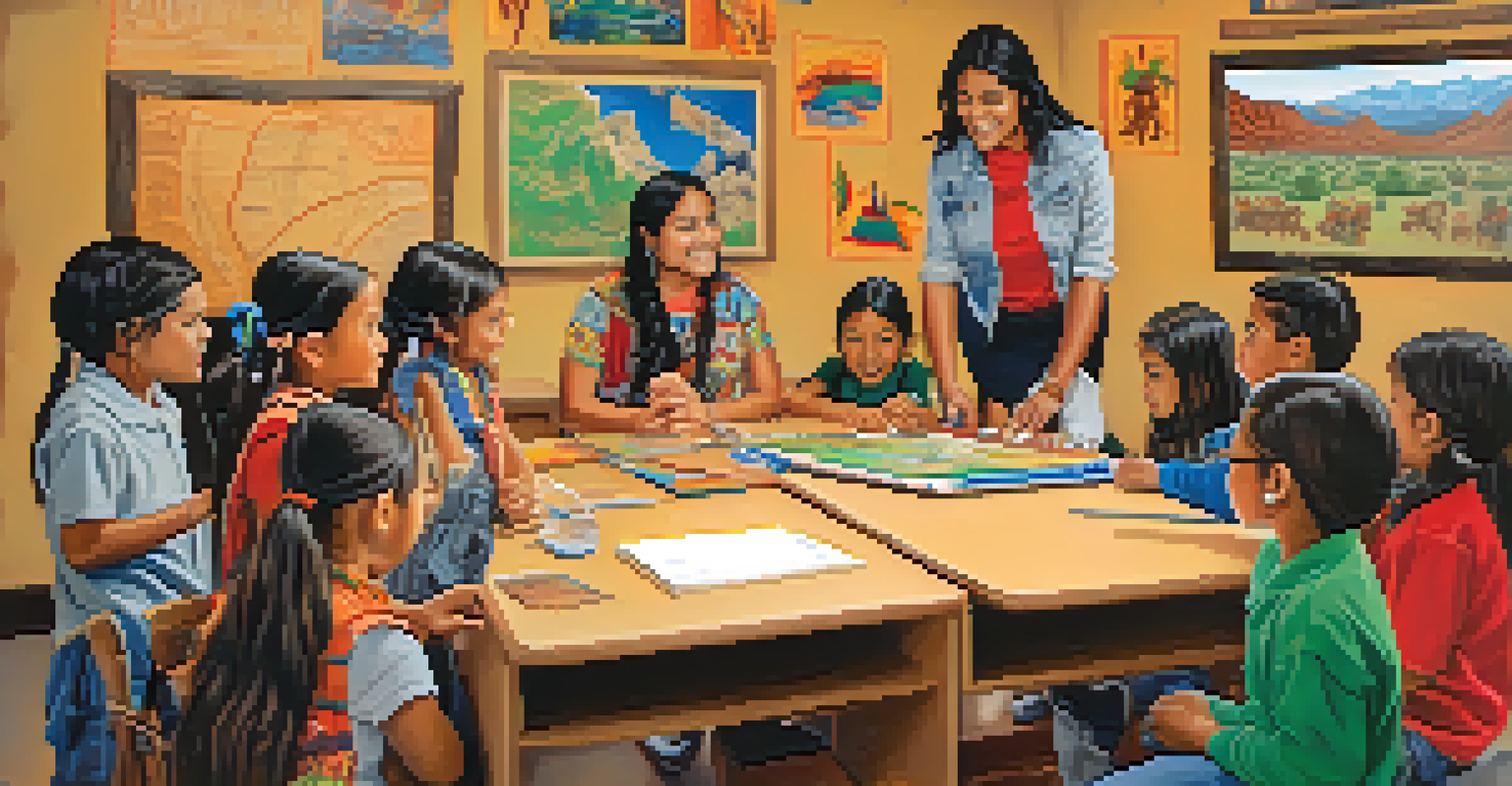Languages of the Apache: A Deep Dive into Their Heritage

Introduction to Apache Languages and Their Significance
The Apache people, known for their rich culture and history, speak several languages that are part of the Athabaskan language family. These languages, including Western Apache, Eastern Apache, and Navajo, are not just means of communication but are vital to the Apache identity. Understanding these languages opens a window into the Apache way of life, their beliefs, and their connection to the land.
Language is the roadmap of a culture. It tells you where its people come from and where they are going.
Each language carries unique stories, traditions, and knowledge that have been passed down through generations. For instance, the Western Apache language reflects the intimate relationship between the Apache people and their environment, showcasing how language encapsulates ecological knowledge. This deep connection highlights the importance of preserving these languages for future generations.
As we delve into the Apache languages, we will explore their structure, usage, and the challenges faced in their preservation. This journey not only sheds light on the linguistic diversity within the Apache community but also emphasizes the cultural significance that language embodies.
The Structure of Apache Languages: A Linguistic Overview
Apache languages feature complex structures that are fascinating for linguists and language enthusiasts alike. Predominantly agglutinative, these languages form words by stringing together morphemes, which are the smallest units of meaning. For example, a single word in Apache can convey what would take an entire sentence in English.

This structure allows for nuanced expression, capturing feelings, actions, and identity in ways that might not be possible in other languages. Additionally, Apache languages often use tone and pitch to convey meaning, adding another layer of complexity. This unique linguistic feature illustrates how language can shape thought and cultural perception.
Apache Languages and Identity
The Apache languages are vital to the Apache people's cultural identity, serving as a means to convey their history, traditions, and connection to the land.
Furthermore, the rules of syntax and grammar in Apache languages differ significantly from those in English, making them a rich field of study. By understanding their structure, we gain insights into the Apache worldview and how they interpret their experiences through language.
The Role of Language in Apache Culture and Identity
Language serves as a cornerstone of Apache culture, fostering a sense of community and belonging. It is through language that stories are shared, traditions are taught, and the collective memory of the Apache people is preserved. This oral tradition is not merely a form of communication; it is a way to transmit values and worldviews.
The preservation of our native languages is not just a matter of words, but a matter of identity, culture, and history.
For many Apache speakers, using their language is a source of pride and identity. It connects them to their ancestors and reinforces their cultural heritage. In recent years, there has been a renewed effort among Apache communities to teach their languages to younger generations, ensuring that these vital aspects of their culture continue to thrive.
Cultural ceremonies, storytelling, and songs are often conducted in Apache languages, further embedding the language into the fabric of daily life. This language revitalization is essential for maintaining the cultural richness and diversity that defines the Apache people.
Challenges in Preserving Apache Languages Today
Despite their rich heritage, Apache languages face significant challenges in preservation. Like many indigenous languages, they are at risk of extinction due to a declining number of fluent speakers. Factors such as urbanization, globalization, and the dominance of English contribute to this decline, threatening the survival of these languages.
Moreover, younger generations may feel disconnected from their linguistic roots, often opting to communicate in English. This shift can lead to a loss of cultural identity, making it crucial for communities to find ways to engage youth in learning their ancestral languages. Programs that integrate language learning with cultural practices have shown success in rekindling interest.
Challenges in Language Preservation
Apache languages face threats from declining fluent speakers and cultural disconnection, making revitalization efforts essential for their survival.
Efforts to document and teach Apache languages are underway, with community-led initiatives gaining momentum. By addressing these challenges, Apache communities strive to ensure that their languages and cultures remain vibrant and relevant in a rapidly changing world.
Efforts for Language Revitalization Among Apache Communities
In response to the challenges faced, Apache communities are actively working on language revitalization initiatives. These programs often involve teaching the language in schools, creating language immersion camps, and utilizing technology to make learning accessible. By fostering a love for their language, they hope to inspire younger generations to embrace their heritage.
Community events, such as language festivals and workshops, play a pivotal role in promoting language use. These gatherings not only celebrate Apache culture but also encourage families to speak the language at home. This grassroots approach has proven effective, as it creates a supportive environment for language learners.
Collaborations between tribal leaders, educators, and linguists are essential for developing effective teaching materials and curricula. These partnerships help ensure that language revitalization efforts are culturally relevant and resonate with the community's values.
The Influence of Apache Languages on Other Languages
Apache languages, while primarily spoken within their communities, have also influenced neighboring languages and cultures. Linguistic borrowing occurs when words and phrases are adopted from one language into another. For instance, certain terms related to flora and fauna have made their way into English, reflecting the deep ecological knowledge of the Apache people.
Moreover, the unique grammatical structures of Apache languages have intrigued linguists, leading to comparative studies that highlight their significance in the broader context of language development. Understanding these influences helps linguists appreciate the interconnectedness of languages and cultures.
Revitalization Initiatives in Action
Apache communities are actively engaging in language revitalization through educational programs, community events, and collaborations to ensure their languages endure.
This influence underscores the importance of preserving Apache languages, not only for the communities themselves but also for the linguistic tapestry of the region. As we recognize their contributions, we can foster a greater appreciation for the diversity of human expression.
Conclusion: Celebrating Apache Languages and Heritage
In conclusion, the languages of the Apache people are not just a means of communication; they are a repository of history, culture, and identity. The efforts to preserve and revitalize these languages reflect a broader commitment to honoring their heritage and ensuring that Apache voices continue to be heard. By understanding and supporting these initiatives, we contribute to the richness of human diversity.
As we celebrate Apache languages, we also recognize the resilience of the Apache people in the face of challenges. Their determination to keep their languages alive is a testament to their strength and cultural pride. Engaging with these languages offers a deeper understanding of the Apache worldview and their profound connection to the land.

Ultimately, the survival of Apache languages is a shared responsibility. It invites each of us to appreciate the beauty of linguistic diversity and the stories that shape our collective human experience.